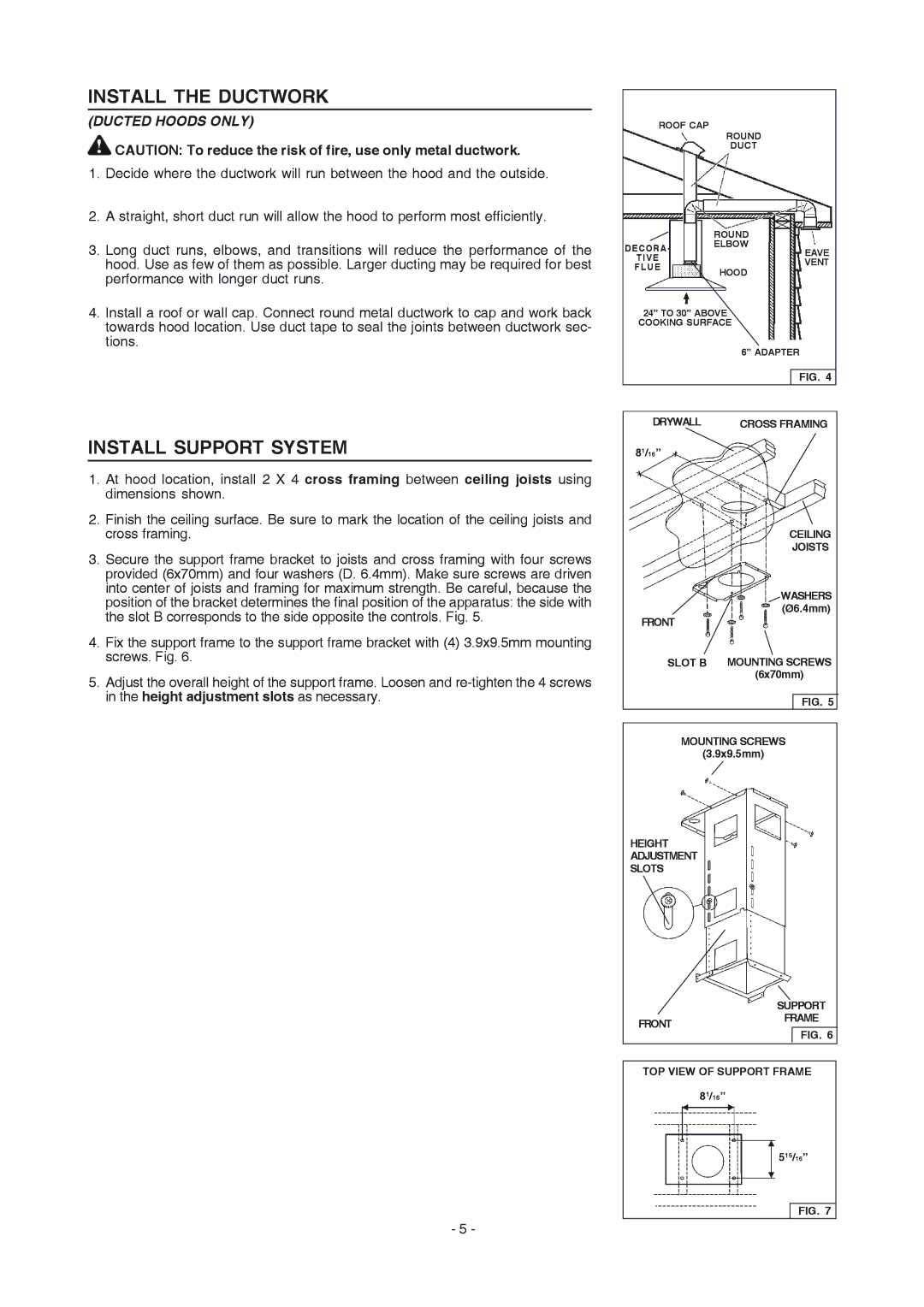PL36PC50EC specifications
The Frigidaire PL36PC50EC is an advanced electric cooktop designed for culinary enthusiasts and everyday cooks alike. This model stands out due to its impressive combination of features, technologies, and user-friendly design, making it an essential addition to modern kitchens.One of the main features of the Frigidaire PL36PC50EC is its versatile cooking surface. The cooktop includes five radiant elements that provide ample space for multiple pots and pans. Each burner has adjustable heat settings, allowing users to simmer delicate sauces or sear steaks with precision. The quick-boil element is particularly noteworthy; it delivers powerful heating to accelerate the cooking process and is ideal for preparing meals in a hurry.
The cooktop is equipped with a sleek, smooth ceramic glass surface that not only enhances its aesthetic appeal but also simplifies the cleaning process. Spills and splatters can be wiped away effortlessly, ensuring that maintaining a neat kitchen is hassle-free. Moreover, the surface is designed to resist scratches and stains, ensuring long-lasting performance.
Advanced safety features are also a significant aspect of the Frigidaire PL36PC50EC. The cooktop includes a hot-surface indicator light that illuminates when the burners are still hot, reducing the risk of accidental burns. Additionally, the unit is designed with child safety features, giving peace of mind to families with young children.
The Frigidaire PL36PC50EC is equipped with precise control knobs that offer easy and intuitive operation. Users can easily adjust the temperature settings, allowing full control over their cooking experience. The dual element configuration on select burners further adds flexibility, enabling cooks to switch between small and large cookware seamlessly.
With its modern design and engineering, the Frigidaire PL36PC50EC not only enhances functionality but also complements a variety of kitchen aesthetics. Its built-in installation capabilities allow for seamless integration into countertops, offering a streamlined look.
In conclusion, the Frigidaire PL36PC50EC electric cooktop showcases a blend of innovative features and practical solutions for everyday cooking needs. With its powerful elements, easy-to-clean surface, safety features, and intuitive controls, it represents a valuable asset for any modern kitchen.

